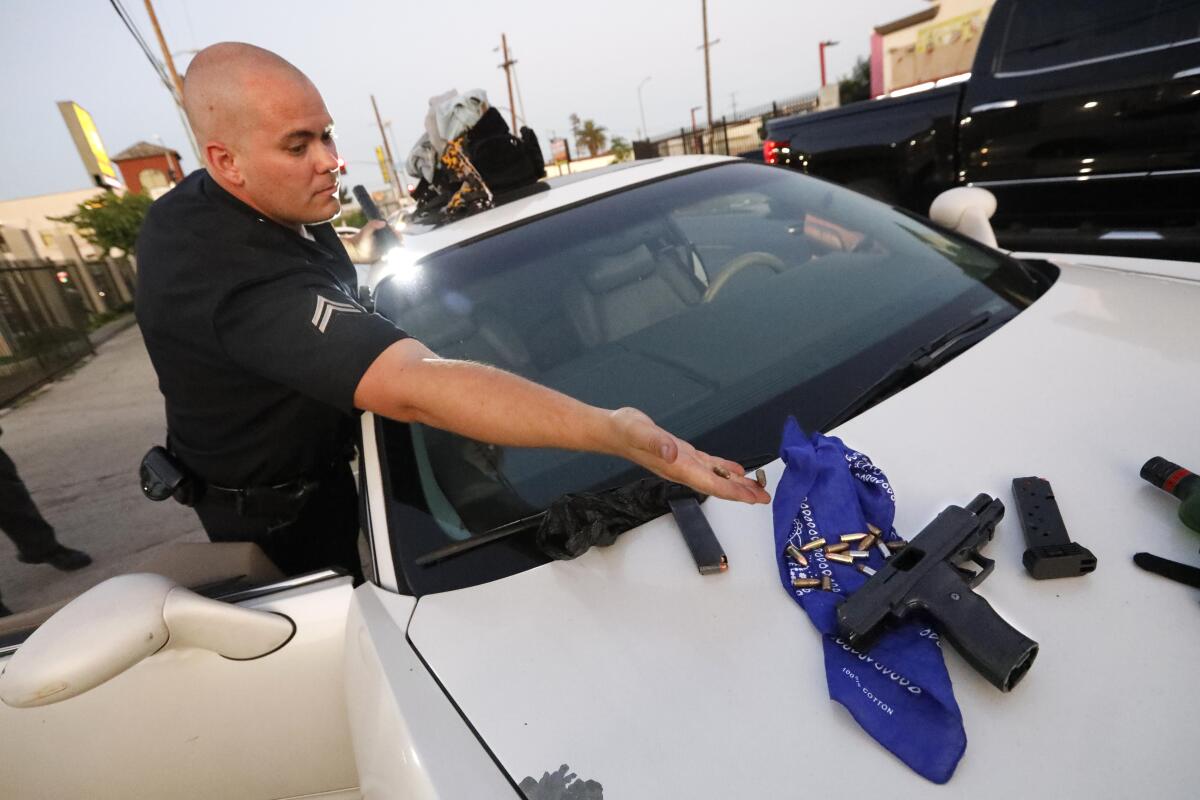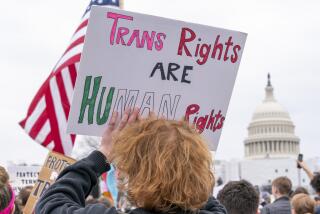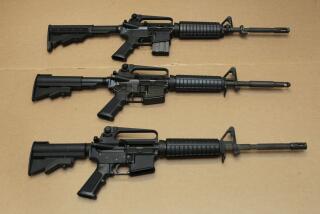Op-Ed: Did the Supreme Court tip its hand on the blockbuster gun case it’s hearing Wednesday?

- Share via
For years, cities across the country have limited who may carry a gun in public. The Supreme Court will soon decide whether these limits violate the 2nd Amendment. The effect could be staggering — the difference between a few hundred guns and hundreds of thousands of guns on the streets of Los Angeles, New York City or Washington.
With stakes so high, commentators have naturally speculated about the outcome. Given the court’s conservative supermajority, many expect the court to dramatically expand the right to carry firearms in public.
Quietly, however — in a rare action taken through the court’s docketing procedures — some of the court’s conservative justices may have tipped their hand. What they’ve revealed is a fact-sensitive approach to the case that should give gun safety proponents reason for cautious optimism.
Start with a bit of Supreme Court 101. When a party that has lost in a lower court wishes to obtain the Supreme Court’s review, it files a petition for a “writ of certiorari.” The most important page of this petition is the first one, which sets forth the question presented by the case. As the court’s own rules explain, “Only the questions set out in the petition, or fairly included therein, will be considered by the Court.” The “question presented” thus dictates the scope of the court’s analysis.
It takes four justices to vote in favor of granting a “cert” petition. And in nearly every granted case, the justices vote to accept, verbatim, the question presented in the petition. (Occasionally the justices will limit their review to one of multiple questions in a petition, or add a threshold question to clarify the court’s power to hear the case. )
In the cases the court initially decided to hear this term, the justices accepted the exact wording of a question presented in all the cert petitions — all, that is, except the landmark gun rights case, New York State Rifle & Pistol Assn. vs. Bruen. In this case, they took the significant step of rewriting the question presented, and thus changed the trajectory of the case.
Rewriting a question may seem trivial. It is not. Last term, out of 58 cases, the Supreme Court rewrote the question presented in just one. Tellingly, the justices then decided that case entirely on the basis of the revised question, holding that an earlier decision by the court does not apply retroactively. The same was true in the year I clerked at the court: The justices rewrote just one question and proceeded to decide that case precisely on the new grounds.
In this term’s gun case, the revision seems equally crucial.
Current New York law forbids individuals to carry a gun in public unless they can demonstrate a “special need” for self-defense. In challenging this law, the original cert petition presented this question: “Whether the Second Amendment allows the government to prohibit ordinary law-abiding citizens from carrying handguns outside the home for self-defense.”
To gun rights activists, the answer is an obvious no because all law-abiding citizens should have the right to carry a gun in public, regardless of whether they have a special need. And if the conservative justices had strongly agreed, the petition would probably have been quickly accepted as written.
But that’s not what happened. As the court’s docket shows, the justices first discussed the cert petition at a private conference in March, before debating it again at two additional conferences in April. In each conference, however, the conservative justices failed to produce the four votes needed to grant review. (None of the liberal justices are likely to have voted to grant the case because they almost certainly agreed with the lower court ruling upholding New York’s law).
Then, at another conference held at the end of April, the justices voted to grant the case.
What changed? The record indicates just one thing: The court rewrote the question presented, limiting it to ask “whether the State’s denial of petitioners’ applications for concealed-carry licenses for self-defense violated the Second Amendment.”
The rewritten question focuses the court’s review first to the matter of concealed-carry, rather than open-carry, licenses — a sensible move because that is the type of license for which the petitioners originally applied.
The second change is more important. Rather than asking about the right of all law-abiding citizens to carry guns in public, the court’s rewritten question focuses on just the original two petitioners — individuals who were denied special need licenses by New York. In doing so, the justices have made clear that the specific, factual circumstances surrounding the applications will be crucial to their analysis. (Otherwise, the original question presented would have sufficed.)
What, then, are the specifics of the applications? One of the petitioners, Robert Nash, explained in his application that he needed a concealed-carry license because of a “recent string of robberies in the area” around his home, including a robbery that occurred on his street just days before he filed for the license. Yet the New York licensing authority still rejected his application. In contrast, the other petitioner, Brandon Koch, openly admitted in his application that he did “not face any special or unique danger to his life.”
By training the question presented on these facts, the court hints at an outcome that both sides in the gun debate should be able to live with.
State laws that condition the right to public carry on a demonstrated need for self-defense could be constitutional, in keeping with a lengthy historical tradition of similar laws. So New York would be free to deny licenses to applicants like Koch who lack a special need, thus substantially reducing the number of guns on the streets. But states may not utilize a special need requirement as a de facto ban on all public carry. Doing so would infringe the 2nd Amendment right of those who face real and particularized dangers — such as Nash.
The Supreme Court has begun its 2021-22 term with its lowest approval rating in decades. A fact-sensitive, centrist ruling on gun rights would go far toward bolstering its public legitimacy.
Aaron Tang is a law professor at UC Davis and a former clerk for Supreme Court Justice Sonia Sotomayor. @AaronTangLaw
More to Read
A cure for the common opinion
Get thought-provoking perspectives with our weekly newsletter.
You may occasionally receive promotional content from the Los Angeles Times.










